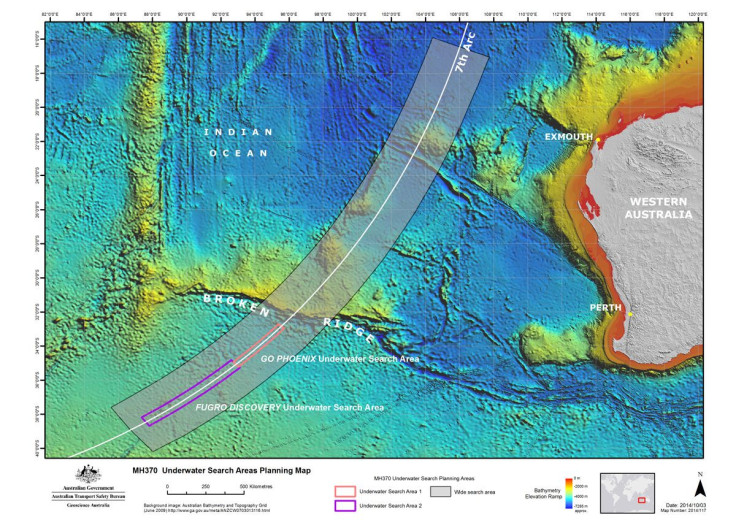MH370: Bad Weather Likely To Affect Search For Missing Jet, Third Australian Vessel Joins Operation

The underwater search operation for missing Malaysia Airlines Flight MH370 could be hindered by bad weather conditions over the coming week, Joint Agency Coordination Centre, or JACC, said in its latest update on Wednesday. The warning comes after a third Australian vessel, GO Phoenix, commenced a search for the jetliner on Tuesday.
A considerable variance in weather conditions, including gale force winds, across a search area of over 61,776 square miles is likely to affect the ongoing search that resumed in September after a four-month break. However, conditions are expected to improve in the coming months, JACC said. The agency, which is leading the search operation from Australia, said that an area of over 1,158 square miles of the ocean floor had been mapped so far but had yielded no positive clues as to the whereabouts of the plane.
“In addition to locating the aircraft, the underwater search aims to identify any crucial evidence, such as aircraft wreckage and flight recorders, to assist with the Malaysian investigation,” JACC said in a statement.
The agency said that three survey vessels -- GO Phoenix, Fugro Discovery and Fugro Equator -- are currently involved in the search for the Boeing 777, which went missing on March 8 with 239 people on board. Bad weather conditions had previously forced the Fugro Discovery to suspend its search but the vessel recommenced its operations on Tuesday, JACC said.
“The complexities surrounding the search are immense. It involves vast areas of the Indian Ocean with only limited known data and aircraft flight information,” JACC said, in the statement.
According to JACC, it is very difficult to determine Flight MH370’s final resting place with certainty, but "the available data and analysis indicate that the most likely location lies close to a long but narrow arc in the southern Indian Ocean, where the aircraft last communicated with a ground station through a satellite.”
“This is where the aircraft is assessed to have run out of fuel,” JACC said, in the statement.
© Copyright IBTimes 2024. All rights reserved.





















